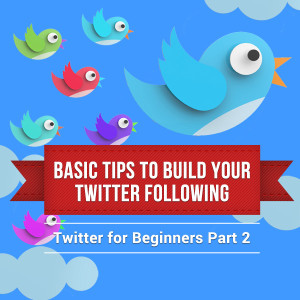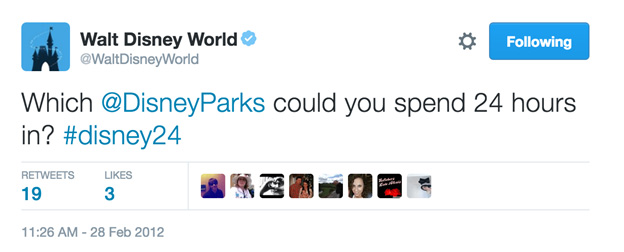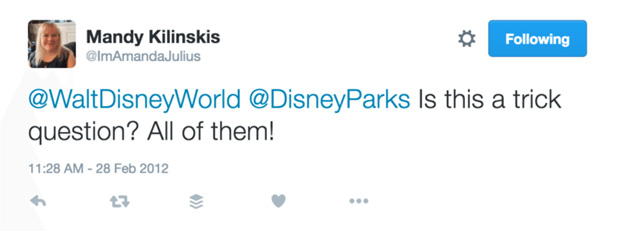 Last week, I explained the different terms you’ll encounter on Twitter and showed you how to create a Twitter profile.
Last week, I explained the different terms you’ll encounter on Twitter and showed you how to create a Twitter profile.
Now it’s time to take the next step—building a Twitter following.
When I mention “following,” I’m referring to an engaged group of people that’s interested in what you have to say. Real people with active Twitter accounts. I’m not going to teach you how to gain followers on Twitter with $20 or less.
Building a Real Twitter Following
Twitter gives you a platform to share your ideas to the public. But only a true set of followers can help you spread that idea further.
Without followers, tweeting is just like sending messages to an empty abyss. There’s no feedback, much less a conversation.
It’s also hard to deny that the more active followers you have, the bigger your reach is.
How to Gain Followers on Twitter: 8 Easy Strategies
1. Upload a Picture with Your Tweets
Tweets can now include pictures, unlike a few years ago when you had to click a link to see the picture included. An experiment done by Buffer showed that tweets that include images got 89% more favorites, and 150% more retweets.
Click one of the buttons shown below to add a picture, video, or GIF with your tweet.

2. Retweet Others then Ask for a RT
Adding “Please Retweet”—not the abbreviated “Please RT” gets you up to four times more retweets, suggests data from Data Scientist Dan Zarerella.
Getting more retweets means your posts are republished and shown on other people’s feeds, giving you more exposure to people outside of your immediate network. Some of those people might be interested in what you have to say, so they’ll follow you.
Others might like the tweet, so they’ll RT it again. Doing this recycles your post again to get more exposure on another person’s feed.
Of all the ways you can learn how to gain followers on Twitter, this is probably the easiest. So don’t over do it. Balance this strategy by retweeting others first. This way, when you ask for RTs, your followers are more likely to return the favor.
Please retweet so we can find him. ❤️🙏🏻. pic.twitter.com/mllYILGMwg
— Sam (@notthesingersam) November 20, 2016
As of this writing, Sam only has 390 followers. But after using “Please retweet,” the post already has 230+ retweets.
3. Alert Other Businesses of Problems they Might Want to Correct
This could be customer-service problems, in-store problems, or their online presence.
@GreggsOfficial, a bakery chain in UK, mentioned @GoogleUK in a post after getting alerted about a weird logo found on a Google search of their business name.
@racheldixon total fail! Come on @GoogleUK please fix it!!
— Greggs (@GreggsOfficial) August 19, 2014
This started a conversation where Greggs and GoogleUK handled the gaffe in good humor, and everyone tuning in had a good laugh. Greggs got lots of retweets, likes, and followers because of it, too.
Hey @GoogleUK, fix it and they're yours!!! #FixGreggs pic.twitter.com/d5Ub7qtrLG
— Greggs (@GreggsOfficial) August 19, 2014
4. Reply to Tweets by Big Brands
If you want to learn how to gain followers on Twitter, you should first accept the fact that not everyone who follows you could be a customer.
And that’s okay! That means your feed won’t be a vacuum of blogs and other promotional content about your industry.
Reply to questions tweeted by Big brands, even if it’s not related to what you do. It’s a good way to diversify your Twitter audience.
Users who see the same question sometimes expand the tweet to see other replies. If they like what you said or you gave an interesting link, some of them might follow you.
That’s how Mandy Kilinskis got new followers after replying to a question from @WaltDisneyWorld.


5. Tag Brands Mentioned in Your Blog Posts
Write blog posts that mentions other brands not in direct competition with you. The post could be a list of tools you use for the business, or a round-up of tips on a subject your audience would appreciate.
The goal isn’t just to flatter them and hope they’ll tweet back. What you write needs to be informative, otherwise it just looks spammy. Brands don’t want to be connected to anything spammy.
Here’s an example of a tweet where the author mentioned people interviewed for the article:
22 Email #coverletter Tips: With Easy to Follow Samples via @tutsbusiness @tutsplus featuring @JohnPaulEngel and @weitingliu pic.twitter.com/pJeiibXA3O
— Charley (@CharleyWrites) November 22, 2016
Sometimes, you don’t need more information but it’s good to use other businesses as examples to make a point in your articles. In the blog post “Out of Ideas? Here are 7 Websites and Strategies to Inspire Your Writing,” there’s a screenshot from Orman Guidance as an example for employee features.
When the article is promoted, Orman Guidance and other websites featured on it are mentioned in the tweet.
7 Websites & Strategies to Inspire Your Writing @Mcdougalljohnd feat.@oneworddotcom @thebestofemail @Orman_Guidance https://t.co/Aw0WktznRa pic.twitter.com/mzprIzGx6R
— Charley (@CharleyWrites) November 22, 2016
6. Mention Authors of Articles You Like
As a writer, I know other writers love getting recognized for things they create. That’s why I take the time to tag the authors of articles I share on Twitter.
“Confessions of a Google Spammer” by @jgdeutsch https://t.co/JRDsyVlAVF
— John McDougall (@Mcdougalljohnd) November 18, 2016
Sharing thought-provoking and informative articles builds my authority online, even if I didn’t write it. Doing this also helps me build a relationship with other writers—and to some extent, the people already following them.
7. Participate in Interesting Conversations
Twitter is like one big chatroom, so don’t be afraid to chime in on conversations that interest you.
Answers that add value to the conversation will earn you a couple of retweets, some likes, and even new followers. Just make sure you reply to the original tweeter, and mention other relevant parties in the conversation so they see your post.
@ramit you don't need those things specifically. But some self-chosen ritual increases odds of success.
— Darshan (@Darshan_Desai) November 17, 2016
8. Join the Hashtag Party
Twitter users loooooove hashtags.
Jumping on a rising trend (hashtag) puts your tweet in front of other users tweeting about the same topic. This exposure could bring you like-minded followers. It also makes your tweet searchable.
Trending hashtags change and vary depending on what industry you’re in, so do some research on hashtagify.me for popular trends before posting.
Regular hashtags like #FollowFriday, #TBT (throwback Thursday) or #MotivationMondays are also good trends to join.
Unlike seasonal hashtags like #NFL2016, these are used every week so your tweets won’t be irrelevant once the trend passes. These hashtags may not be related to your industry, so you’ll have to find a way to make it relevant for your existing and future followers.
Career Coach Michelle Riklan (@ResumeWoman) uses the hashtag #FunnyFriday to add humor in a challenging job market.
#FunnyFriday – Riklan Resources… always trying to find the humor in a challenging job market. pic.twitter.com/RWHHPOaL2H
— Michelle A. Riklan (@ResumeWoman) September 23, 2016
Start Slow with Real Followers
I know finding real followers might be slower than you expected. But that’s the only way it will be worth it.
How slow (or fast) it goes depends on the effort you’re willing to put into building your authority on Twitter. For now, just keep at it. Keep sharing interesting articles and keep joining interesting conversations.
Next week, I’ll discuss how to use Twitter lists to grow your audience even further. I’ll also tackle different ways businesses use Twitter to serve their customers and grow their online presence at the same time.
